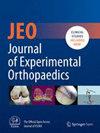The increased rate of anterior cruciate ligament (ACL) tears has led to a greater number of revisions. Revision surgery can be performed in one or two stages. Single-stage revision ACL reconstruction (ssRACLR) may be performed when prior tunnels can be re-used or bypassed whereas a two-stage procedure is indicated when bone grafting of dilated tunnels prior to revision is necessary. While both approaches have shown similar functional outcomes and failure risk, ssRACLR is preferred, when possible, to avoid the increased morbidity, inconvenience and cost associated with two-stage RACLR. In adequately planning for RACLR, a surgeon should investigate the mechanism and timing of injury as well as the previous graft selection, associated pathology and the tunnel placement and size. It is especially important to obtain radiographs and three-dimensional imaging including magnetic resonance imaging (MRI) and computed tomography (CT), which allow the surgeon to accurately evaluate the entire tunnel architecture to determine surgical staging. Following a detailed assessment of the pathoanatomy, the surgeon may determine graft and hardware type, tunnel placement and utilization of lateral extra-articular tenodesis (LET) and other procedures. In our experience, ssRACLR can be carried out for over 90% of revision cases with creative pre-operative planning using autograft with bone plug(s), divergent tunnel creation on the femur (when necessary) and convergent tunnel creation on the tibia (when appropriate) and suspensory or interference fixation as needed. In revision scenarios, we believe that autografts with bone plugs provide the best opportunity for graft healing and incorporation and that LET can be a useful adjunct to reduce re-tear rates. The purpose of this review is to report on the preoperative considerations and surgical techniques for performing ssRACLR, as well as the outcomes.
Level V expert opinion.



